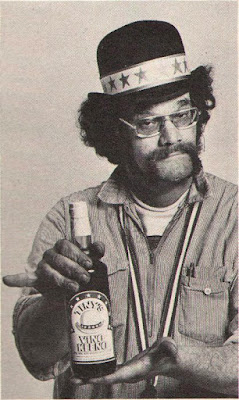Navel Grazing
 Among the many pleasures of exploring Tokyo is taking a stroll on a warm evening, rounding an unfamiliar corner, and stumbling across a neighborhood festival in full swing. These are not grand, traffic-stopping celebrations like Gion in Kyoto or Asakusa's raucous Sanja festival. Instead, Tokyo's neighborhood matsuri allow you to enter the intimate spirit of the surrounding area, to feel like a member of the community. A visit to a matsuri can begin with a stop at the temizuya to purify the hands, then at the main shrine building for a prayer and a blessing. After the religious rituals are dispensed with, participants get down to the serious business of eating, drinking, listening to traditional music, playing games of chance, and seeing what the neighbors are up to.
Among the many pleasures of exploring Tokyo is taking a stroll on a warm evening, rounding an unfamiliar corner, and stumbling across a neighborhood festival in full swing. These are not grand, traffic-stopping celebrations like Gion in Kyoto or Asakusa's raucous Sanja festival. Instead, Tokyo's neighborhood matsuri allow you to enter the intimate spirit of the surrounding area, to feel like a member of the community. A visit to a matsuri can begin with a stop at the temizuya to purify the hands, then at the main shrine building for a prayer and a blessing. After the religious rituals are dispensed with, participants get down to the serious business of eating, drinking, listening to traditional music, playing games of chance, and seeing what the neighbors are up to.If, in mid-September, you happen to be exploring the area around Eifukucho station on the Inokashira line, you might stumble across the Aki Matsuri, or Autumn Festival, at Suginami-ku's Omiya Hachimangu. Sometimes referred to as Tokyo no heso, or the navel of Tokyo, this shrine is said to have been founded during the Heian era, between the 8th and 12th centuries. Stretched out along an avenue lined with towering cedar and zelkova trees, small food stalls serve up traditional matsuri fare such as yakisoba (fried noodles), takoyaki (octopus balls) and okonomiyaki (a kind of pancake stuffed with vegetables). But there are also yatai selling Thai food and Chinese dumplings, reflecting the changing population, or perhaps just the changing tastes, of Japan. To see more photos from last year's festival, click here.
Omiya Hachimangu Autumn Festival 2008
September 12 - 16
Nearest station: Keio Inokashira Line Eifukucho Station (10 minutes)
VS


Comments